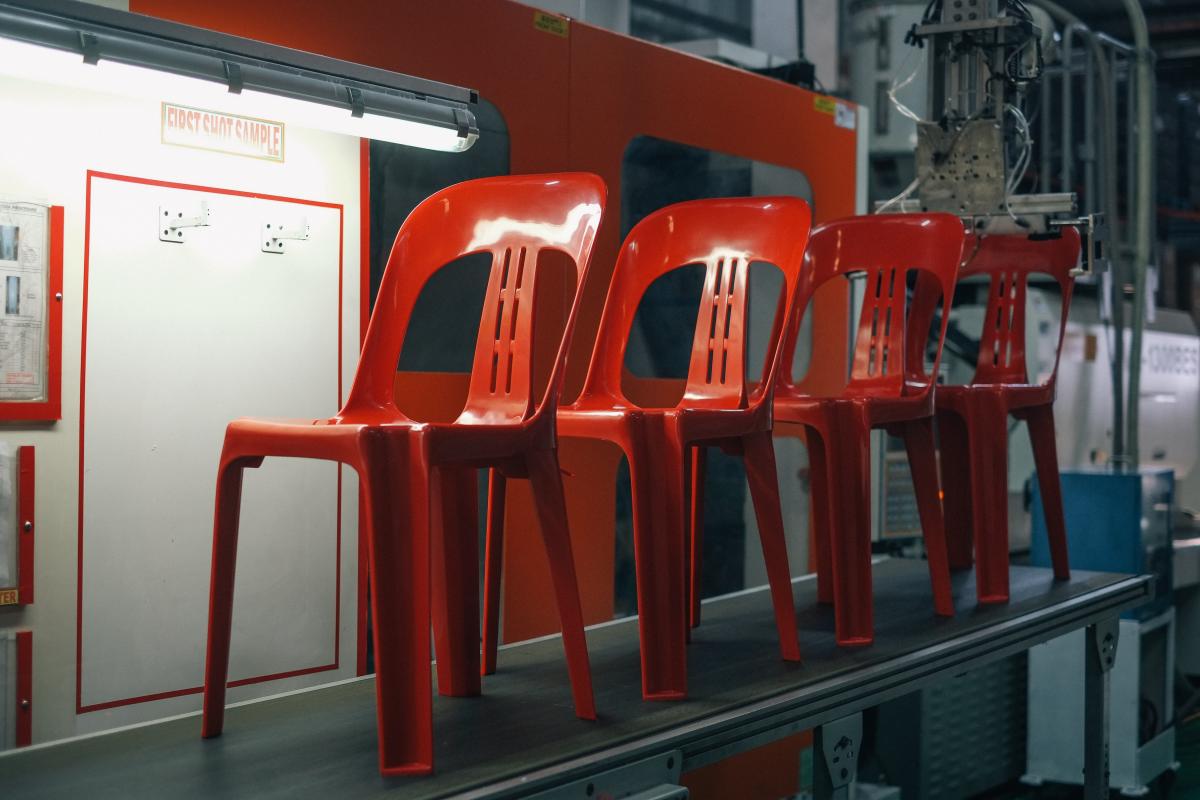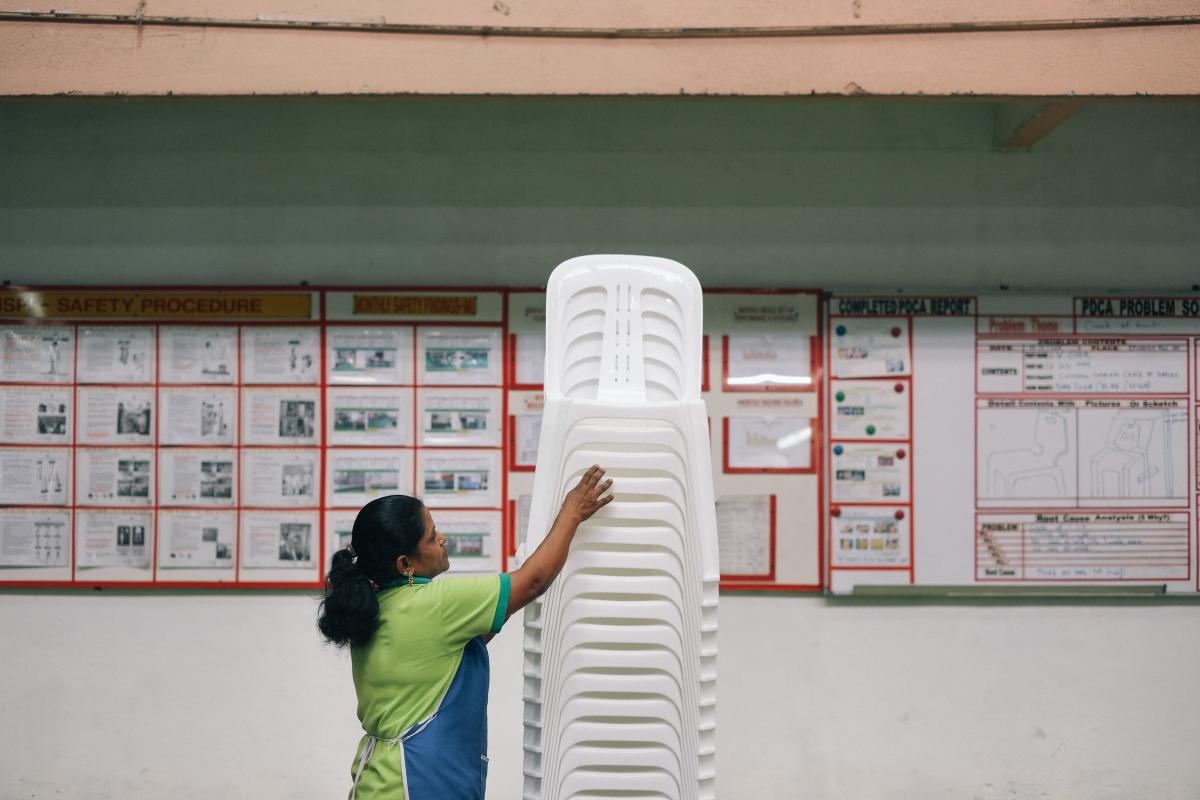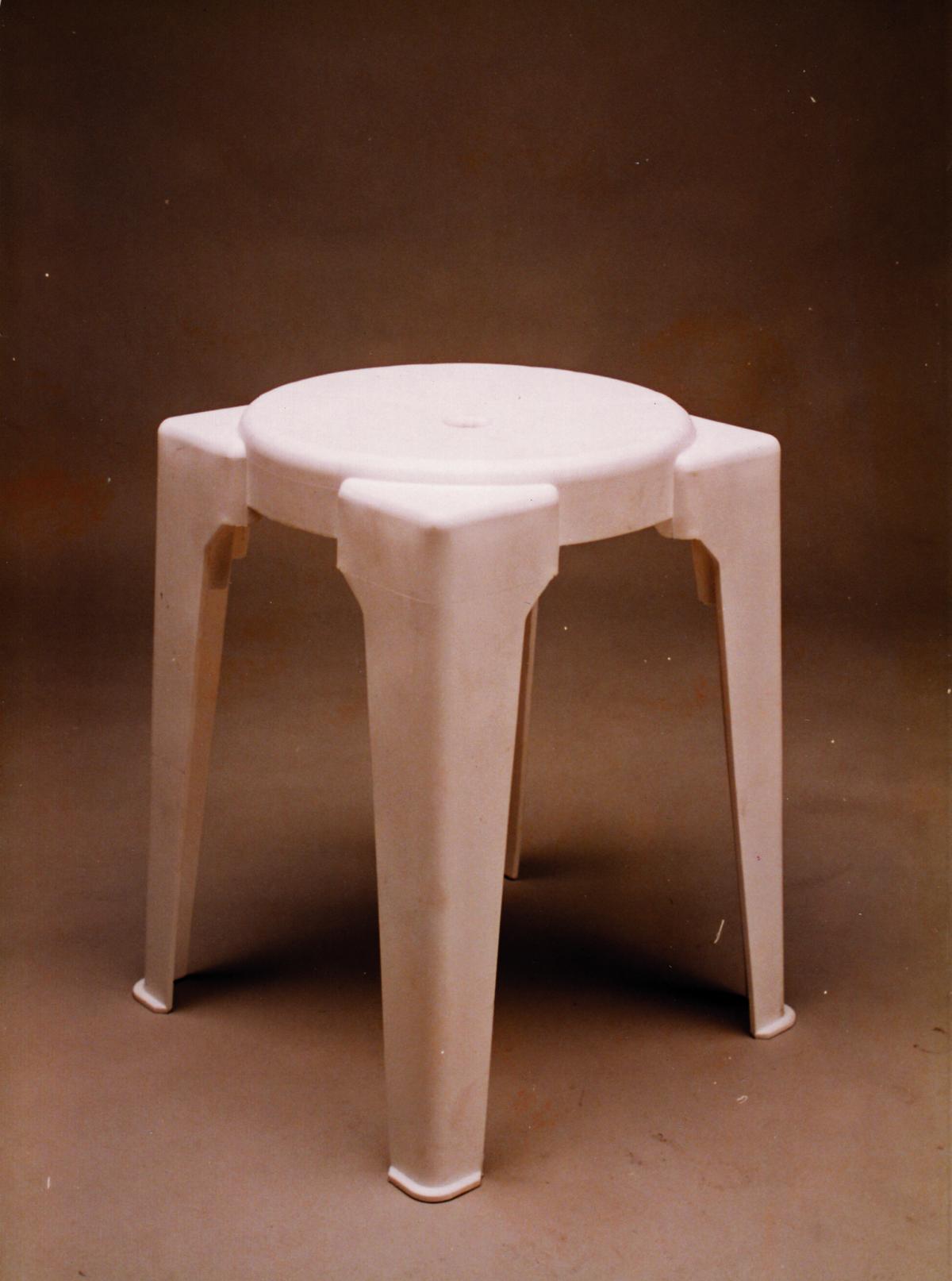The Chair That’s Everywhere
Squat, boxy and unglamourous, but decidedly practical, the one-piece stacking plastic chair is a design that has become part of everyday life all over the world.
The industry calls it the monobloc chair. To everyone else it’s that cheap plastic chair, the squarish, one-piece, stackable thing that populates the lawns and gardens of the world, so ubiquitous as to go unnoticed.
It seems to be everywhere: inside a storeroom in Florida, outside the Uruguay Pavilion at the Venice Biennale, and on a boat on the Zambezi River in Zambia, to mention just a few of the places the chair has been spotted, according to the Plastic Chair World Map. No one knows how many exist in their different versions or even who the original designer is, but they clearly number in the millions.

With its 50 injection moulding units, Mah Sing Plastics in Malaysia is one of the largest high-tech plastic manufacturers in Southeast Asia, producing a wide range of plastic products including industrial containers, furniture, motorcycle helmets, pallets and the ubiquitous lightweight stackable resin chair. (Photo: Rahman Roslan)
The version produced by Malaysia’s Mah Sing Plastic is indistinguishable from others except for a few details: a ‘Magnum’ trademark stamped on its back, rows of dash-like drainage slots (six on the spine and fifteen on the seat), and an ‘Asian-friendly’ size of 80×54×45 cm (31.5×21.3×17.7 in). It is also manufactured just like the others: tiny beads of polypropylene and colour concentrate are melted at a temperature of 200°C (392°F) and then injected into a mould. Sixty seconds later, or even less, a 2.5 kg (5.5 lb) plastic chair is unveiled. This process hasn’t changed since the first MS 938A rolled off the assembly line in 1987.
You seem to enjoy a good story
Sign up to our infrequent mailing to get more stories directly to your mailbox.Executive director Hong Hock Seng still vividly recalls that day. ‘When the first piece of the chair came out at midnight, I had to carry it to the airport and catch a flight to Canada for an exhibition,’ he said. ‘It was my first time travelling overseas, and I didn’t even know how to change planes!’ He eventually made it to the trade show with two white chairs and clinched the MS 938A’s first sales. Ironically, Mah Sing had sold the plastic chair back to the West where it was originally invented.

A worker in the Malaysian company Mah Sing Plastics stacks up the monobloc chairs. The first all-plastic chair is often said to have been produced by Italian industrial designer Joe Colombo in 1965. The chair became popular in the early 1970s when innovations in injection moulding made it possible to create them in one mould from one material. Today, variations of the chairs are manufactured in dozens of countries around the world, which helps to explain their global ubiquity (Photo: Rahman Roslan)
With the end of the Second World War, furniture designers began experimenting with the newly invented plastics to make chairs. Pioneering examples include the iconic single-shell chair by Americans Charles and Ray Eames, and the Hille Polypropylene chair by British designer Robin Day. The first all-plastic chair, however, wouldn’t arrive until 1965, when Italian industrial designer Joe Colombo created the Universale. It would take another two decades before such a chair caught on with manufacturers, but after Mah Sing’s founder saw one at a trade fair in Germany in the mid-1980s, he developed his own to expand his business beyond the manufacture of plastic containers.
The MS 938A was just one of several all-plastic chairs that entered the market beginning in the 1980s. Though the details of their designs differed, they shared similar features that proved to be big advantages: they were light, cheap, and most importantly, stackable. By offering the flexibility to seat just as many people as needed, this space-saving design eventually replaced Thonet’s Chair No. 14 as the furniture of choice amongst kopitiams, the local coffeeshops of Malaysia and neighbouring Singapore, although traces of the No. 14 live on in plastic chairs from Malaysia. Their designs display a similar silhouette, and a version from one of Mah Sing’s competitors even has a seat with a pattern that mimics the cane seating of the No. 14.
Today plastics are used so widely that it may be difficult to understand how strange the idea seemed in an age when furniture was still typically made from natural materials like wood, cane or metal. ‘Thirty years ago, when you said “plastic”, they would say, “Huh?” To them, it was very fragile, very brittle. So you had to demonstrate to them,’ explains Mr Hong as he bends the backrest of the MS 938A towards its seat and lets it spring back to shape. It’s a stunt he often used to prove the durability of the material and how plastic chairs can withstand the elements.

Polypropylene, the world’s second most widely produced synthetic plastic, is used to make resin chairs as well as hundreds of other products—bags, fabrics, packaging and utensils. The chairs are manufactured by heating the granules to about 200°C (392°F), and injecting the liquid plastic into a mould. (Photo: Rahman Roslan)
Such flexibility is also found in the transparency of polypropylene, which allows manufacturers to produce the chairs in a wide assortment of colours. While customers in Europe and America may picture the plastic chair in pristine white, the multi-ethnic communities in Malaysia and Singapore see theirs in an array of colours instead, says Mr Hong. Based on the sales of MS 938A, which has been sold largely in Southeast Asia, red is a favourite amongst the Chinese, green is well-liked by the Malays and blue is preferred by Indians. The market for Mah Sing’s white chairs seems to be limited to funeral parlours.

The Unica plastic stool, a variation on the monobloc chair, is an icon of Singapore’s food culture designed by Singaporean industrial designer Chew Moh-Jin in 1990 and produced by local plastics manufacturer Singa Plastics. The Unica’s sturdier, more robust design uses more polypropylene (1.4 kg/3.1 lb) than flimsier monobloc seats.
Unlike most chairs that become iconic for a specific aesthetic or function, the plastic chair has become popular for the pliability of both its material and its design. Like a blank canvas, it can be easily customised for economical mass production. The result is not only a highly functional and affordable piece of furniture used by people all around the world, but also a sign of our globalised times.

